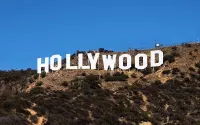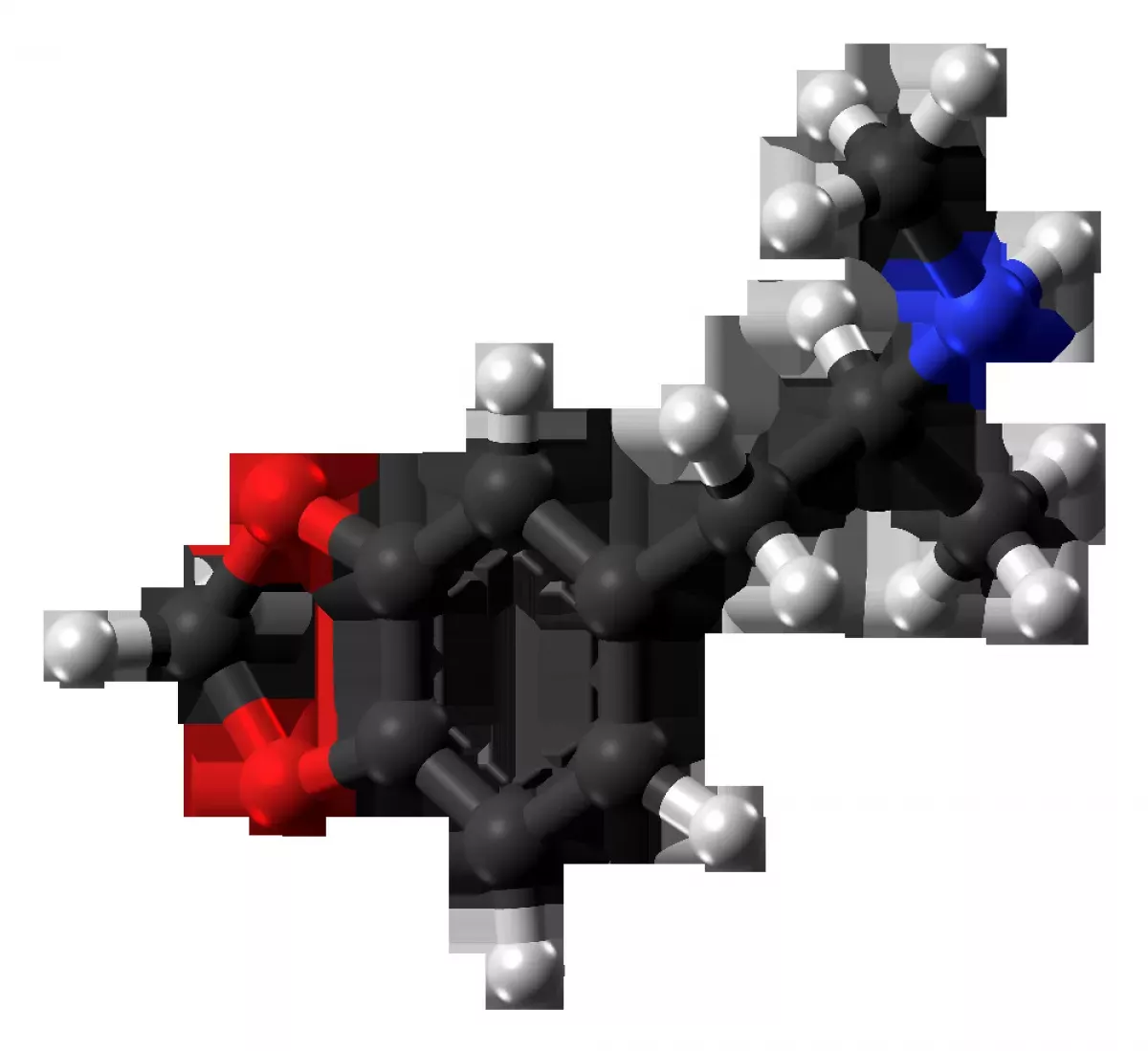MDMA, also known as ecstasy, molly, or mandy, is a powerful drug that affects emotions and creates feelings of closeness. While it has stimulant and psychedelic effects, it's primarily being studied for its potential in treating conditions like PTSD and social anxiety in autism. MDMA is thought to alter sensations, boost energy, enhance empathy, and induce pleasure. When ingested orally, its effects typically manifest within 30 to 45 minutes and persist for three to six hours.
December 1912: Merck Patents MDMA Synthesis
On December 24, 1912, Merck filed two patent applications detailing the synthesis, chemical properties, and conversion of MDMA to methylhydrastinine, marking an early milestone in its history.
1912: MDMA First Synthesized
In 1912, Merck chemist Anton Köllisch first synthesized MDMA as an intermediate compound while trying to synthesize methylhydrastinine.
1920: Merck's Continued Interest in MDMA
Merck researchers revisited MDMA sporadically. A 1920 patent described a chemical modification to the compound, indicating continued interest in its potential applications.
1927: Max Oberlin's Pharmacological Study
In 1927, Max Oberlin studied MDMA's pharmacology, comparing its effects to adrenaline and ephedrine. He found similarities in vascular smooth muscle tissue and stronger effects on the uterus. Oberlin concluded that MDMA's effects weren't limited to the sympathetic nervous system.
1952: Albert van Schoor's Toxicological Tests
Albert van Schoor conducted toxicological tests on MDMA in 1952, likely while researching stimulants or circulatory medications. Despite these early investigations, research on MDMA was not continued at that time.
1953: US Army Investigates MDMA
The United States Army commissioned a study in 1953 to investigate the toxicity and behavioral effects of MDMA and other compounds in animals. These studies were conducted at the University of Michigan.
1954: Continued US Army Research
The US Army continued its research into MDMA in 1954, further exploring its effects and potential applications.
1959: Wolfgang Fruhstorfer's Synthesis
Wolfgang Fruhstorfer synthesized MDMA in 1959 for pharmacological testing as part of his research on stimulants. However, it remains unclear whether he investigated its effects on humans.
1960: First Scientific Publication on MDMA
The first published scientific paper on MDMA appeared in 1960 by Polish researchers Biniecki and Krajewski, describing its synthesis as an intermediate compound.
1965: Shulgin Synthesizes MDMA
Alexander Shulgin, an American chemist, first synthesized MDMA in 1965 while researching methylenedioxy compounds but did not test its psychoactive effects at that time.
1968: Possible Non-Medical MDMA Use
There is evidence suggesting that MDMA may have been used for non-medical purposes in the western United States as early as 1968.
October 1969: US Army Research Declassified
In October 1969, studies commissioned by the US Army in 1953-1954 on the toxicity and behavioral effects of MDMA and other mescaline analogs in animals were declassified.
August 1970: MDMA in Chicago
An August 1970 report from crime laboratory chemists indicated that MDMA was being used recreationally in Chicago, suggesting its emergence as a substitute for MDA.
1970: Shulgin Provides Synthesis Instructions
Around 1970, Shulgin sent instructions for MDMA synthesis to a Los Angeles chemical company, unknowingly contributing to its emergence in the drug scene.
1971: Misuse of Drugs Act Passed in the UK
The UK's Misuse of Drugs Act, passed in 1971, provided the framework for drug control, which was later amended to include MDMA under its scope.
1971: United Nations Convention on Psychotropic Substances
The United Nations Convention on Psychotropic Substances was signed in 1971 to internationally control psychoactive substances, including MDMA.
1973: US Army Research Published
Findings from the US Army's 1953-1954 investigations into MDMA and its analogs were published in 1973, shedding light on the drug's early research history.
1975: First Laboratory Detection of MDMA
A Californian laboratory analyzing anonymously submitted drug samples detected MDMA for the first time in 1975. The ensuing years saw a surge in MDMA samples, surpassing MDA submissions by the early 1980s.
1975: Early Reports of MDMA's Effects
Alexander Shulgin first learned about the psychoactive effects of MDMA around 1975 from a student who described it as having "amphetamine-like content".
May 1976: Shulgin Learns of MDMA's Psychoactive Effects
Around May 30, 1976, Shulgin became aware of MDMA's psychoactive effects through a graduate student who, along with two friends, consumed 100mg and reported positive emotional experiences.
October 1976: Shulgin Experiments with MDMA
Prompted by reports and self-trials of colleagues, Shulgin synthesized and tried MDMA himself in September and October 1976, marking a pivotal moment in his exploration of the drug.
December 1976: Shulgin Presents MDMA Findings
Shulgin first publicly presented his findings on MDMA at a conference in Bethesda, Maryland, in December 1976, bringing it closer to wider scientific attention.
1976: Emergence of MDMA's Recreational Use and Production by the "Boston Group"
A small recreational market for MDMA emerged in the late 1970s, with an estimated 10,000 doses consumed in 1976. The "Boston Group", a collective of chemists with therapeutic interests, began producing MDMA this year but struggled to keep up with rising demand.
1977: MDMA Outlawed in the UK
A 1977 modification to the UK's Misuse of Drugs Act 1971 effectively made MDMA illegal, classifying it under Class A drugs and imposing penalties for its sale, purchase, or possession without a license.
1977: Leo Zeff's Introduction to MDMA and Advocacy for Therapeutic Use
In 1977, Alexander Shulgin introduced MDMA to psychotherapist Leo Zeff. Impressed by its effects, Zeff came out of semi-retirement to champion MDMA's therapeutic potential, training an estimated 4,000 psychotherapists in its use and nicknaming it "Adam" for its perceived ability to induce a state of primordial innocence.
1978: Shulgin and Nichols Publish MDMA Report
In 1978, Shulgin and David E. Nichols published a seminal report detailing MDMA's psychoactive effects in humans, describing it as inducing a controlled altered state of consciousness with emotional and sensual overtones.
1981: Michael Clegg Coins "Ecstasy" and Expands MDMA Market
In 1981, Michael Clegg, recognizing a business opportunity, coined the term "Ecstasy" to make MDMA more marketable.
1981: Establishment of MDMA Quantity Thresholds in Western Australia
Western Australia, under the Misuse of Drugs Act 1981, set specific quantity thresholds for MDMA, influencing court trials and legal consequences related to possession, intent to sell, and trafficking.
1982: DEA Signals Potential Ban on MDMA
The DEA announced in a 1982 media report that it would consider banning MDMA if substantial evidence of abuse surfaced.
1983: The Rise of the "Texas Group" and Mass Production of MDMA
By 1983, Clegg had established the "Texas Group," which began mass-producing and importing MDMA. The group employed pyramid sales schemes, toll-free numbers, and credit card transactions, even paying taxes on their sales. Under the brand name "Sassyfras," MDMA was sold in brown bottles and heavily promoted in bars and nightclubs, particularly in Austin and Dallas–Fort Worth, targeting yuppies, students, and the gay community.
July 1984: DEA Proposes Scheduling of MDMA, Facing Opposition
In July 1984, after a year of research and planning, the DEA proposed scheduling MDMA and requested public comment. Surprisingly, they met with resistance from psychiatrists, psychotherapists, and researchers who opposed the scheduling and demanded a hearing.
1984: Growing Media Attention and Misidentification of MDMA
By mid-1984, MDMA was gaining increasing public attention. Bill Mandel's article in the San Francisco Chronicle discussed "Adam" but mistakenly identified it as MMDA. Notably, the World Health Organization identified MDMA as the only phenethylamine out of twenty to be seized frequently.
February 1985: First Hearing on MDMA Scheduling and Decision for Further Hearings
The first hearing on MDMA's scheduling occurred in February 1985, presided over by Administrative Law Judge Francis L. Young. The decision was made to conduct three more hearings that year, taking place in Los Angeles, Kansas City, and Washington, D.C.
May 1985: Emergency Schedule I Classification of MDMA
Driven by escalating recreational use, particularly in Texas, and citing new data about the neurotoxicity of MDA (an MDMA analog), the DEA, urged by Senator Lloyd Bentsen, announced an emergency Schedule I classification of MDMA in May 1985.
July 1985: MDMA Ban Takes Effect Amidst "Just Say No" Campaign
The ban on MDMA went into effect on July 1, 1985, coinciding with Nancy Reagan's highly publicized "Just Say No" campaign against drug use.
1985: MDMA's Association with Acid House and Spread in Europe
In 1985, Ibiza's acid house scene became linked with MDMA. This association marked the beginning of the drug's spread throughout the UK and Europe alongside rave culture in the late 1980s.
1985: World Health Organization Recommends Schedule I Classification for MDMA
The World Health Organization's Expert Committee on Drug Dependence recommended placing MDMA in Schedule I of the 1971 United Nations Convention on Psychotropic Substances. This recommendation was based on MDMA's pharmacological similarities to already scheduled substances, reports of illicit trafficking, drug seizures, and a lack of well-established therapeutic use. However, the committee acknowledged the reports of MDMA's psychotherapeutic potential but considered the supporting studies methodologically flawed, encouraging further research.
February 1986: MDMA Added to Schedule I of the UN Convention
The Commission on Narcotic Drugs formally added MDMA to Schedule I of the 1971 UN Convention on Psychotropic Substances in February 1986.
1986: Criminalization of MDMA in Australia
MDMA was designated as an illegal substance in 1986 in Australia due to concerns about its potential for harm and misuse.
1991: MDMA Use in Texas and Nightclubs
Despite a decline after criminalization, MDMA remained popular in Texas nightclubs and among young middle-class whites in 1991.
1999: Gender Differences in Adolescent MDMA Use in the United States
From 1999 to 2008, the United States saw a higher prevalence of MDMA use among adolescent girls compared to boys.
2004: MDMA Becomes One of the Most Widely Used Illicit Drugs in the US
By 2004, MDMA had become one of the most widely used illegal drugs in the US, behind only marijuana in terms of attracting first-time users.
2007: MDMA Withdrawal and Dependence
A 2007 expert analysis concluded that MDMA's potential for psychological and physical dependence was roughly three-fourths to four-fifths that of cannabis. Around 60% of MDMA users experienced withdrawal symptoms like fatigue, appetite loss, depression, and difficulty concentrating.
2008: Gender Differences in Adolescent MDMA Use in the United States
From 1999 to 2008, the United States saw a higher prevalence of MDMA use among adolescent girls compared to boys.
2008: European MDMA Prices and Trends
In 2008, the European Monitoring Centre for Drugs and Drug Addiction (EMCDDA) reported that MDMA tablets were typically priced between €3 and €9, containing 25-65mg of MDMA, though some were sold for as low as €1.
2010: Estimated Number of Ecstasy Users in the US
In 2010, an estimated 0.9 million people in the United States used ecstasy.
2010: Decline of MDMA Use in the UK
The BBC reported a decline in MDMA use in the UK in 2010, attributing it to increased seizures, decreased precursor chemical production, and the emergence of substitutes like mephedrone and legal alternatives like BZP.
June 2011: Expert Committee Recommends Maintaining MDMA's Legal Status in the Netherlands
In June 2011, the Dutch Expert Committee on the List advocated for keeping MDMA on List I, citing concerns about potential harm.
2011: Legal Challenge to MDMA Sentencing Guidelines in the US
The ACLU successfully argued in a 2011 US federal court hearing that the sentencing guidelines for MDMA were based on outdated science, although other courts upheld these guidelines.
March 2012: Reclassification of MDMA in Canada
Canada's Controlled Drugs and Substances Act was revised in March 2012, moving amphetamines, including MDMA, from Schedule III to the more restrictive Schedule I.
2012: High One-Year Prevalence of MDMA Use in Germany
Germany recorded a one-year prevalence of MDMA use at 1.7% among individuals aged 25 to 29 in 2012, contrasting with a 0.4% population average.
2014: Review of MDMA's Therapeutic Efficacy and Potential Risks
A 2014 review examined MDMA's safety and efficacy in treating various disorders, particularly PTSD. While showing therapeutic potential for some patients, concerns arose regarding the controllability of MDMA-induced experiences, neurochemical recovery, and potential lasting harm like serotonergic neurotoxicity and persistent memory impairment.
2014: Changes in European MDMA Prices and Forms
By 2014, the EMCDDA observed a shift in MDMA prices, with tablets usually costing between €5 and €10 and containing 57-102mg of MDMA. Additionally, there was a notable increase in the availability of MDMA in powder form.
2014: MDMA Use Among Young Adults in the United States
In 2014, 3.5% of individuals aged 18 to 25 in the United States reported having used MDMA.
2014: US Ecstasy Retail Prices and Drug Intelligence Techniques
In 2014, the UNODC's World Drug Report stated that US ecstasy prices ranged from $1 to $70 per pill, or $15,000 to $32,000 per kilogram. This report also highlighted a developing field called Drug Intelligence, which uses image processing and machine learning to analyze ecstasy pill images, aiding in monitoring illicit distribution networks.
October 2015: MDMA Production and Market in the United States
As of October 2015, most MDMA in the US originated from British Columbia, Canada, imported by Asian transnational criminal organizations based in Canada. The US MDMA market was relatively small compared to other drugs.
2015: Long-Term Effects of MDMA
By 2015, research had not fully determined the long-term effects of MDMA on the human brain. However, consistent evidence pointed to structural and functional deficits in users with high lifetime exposure, suggesting a dose-dependent impact.
2015: High Prevalence of MDMA Use Among European Club-Goers
The 2015 European Drug report revealed that approximately 37% of regular club-goers between the ages of 14 and 35 had used MDMA in the past year.
2016: Global MDMA Use Estimated
In 2016, approximately 21 million people globally, representing 0.3% of the world's population aged 15-64, used ecstasy. This was comparable to cocaine and amphetamine use but lower than cannabis and opioid use.
2017: MDMA Use in the United States
By 2017, an estimated 7% of people in the United States had used MDMA at some point, with 0.9% reporting use within the past year.
2017: Exploring MDMA-Assisted Psychotherapy
Despite no accepted medical uses in 2017, the FDA in the United States approved limited research on MDMA-assisted psychotherapy for PTSD, showing preliminary evidence of its potential in enhancing treatment efficacy.
2017: Adulteration of MDMA with Pentylone
In 2017, it was discovered that some pills sold as MDMA contained pentylone, a substance known to cause agitation and paranoia.
2017: Insufficient Evidence on MDMA as a Rapid-Acting Antidepressant
In 2017, studies explored MDMA's potential as a rapid-acting antidepressant. However, conclusive evidence regarding its efficacy and safety remained insufficient.
2017: FDA Grants Breakthrough Therapy Designation for MDMA-Assisted Psychotherapy for PTSD
In 2017, the FDA granted breakthrough therapy designation for MDMA-assisted psychotherapy for PTSD, a decision that has been met with both support and skepticism.
2017: First Clinical Study of MDMA for Alcohol Use Disorder in the UK
The year 2017 marked the beginning of the first clinical study in the UK exploring the use of MDMA for treating alcohol use disorder.
2018: MDMA Use Among Adults in the European Union
According to the 2018 data, within the European Union, 4.1% of adults (aged 15-64) reported having used MDMA at least once, with 0.8% using it in the past year.
2018: MDMA as a Psychoplastogen and Breakthrough Therapy Designation
In 2018, researchers identified MDMA as a psychoplastogen, a compound promoting neuroplasticity. The FDA also designated it as a "breakthrough therapy" for PTSD treatment.
2021: Limited Medical Uses and Ongoing Research
As of 2021, MDMA had limited approved medical uses. The FDA in the United States was evaluating MDMA for clinical use, Canada allowed limited distribution with Health Canada approval, and Australia permitted its use in PTSD treatment by authorized psychiatrists.
2022: Federal Exemption Granted for MDMA Possession in British Columbia
The Canadian federal government, in 2022, granted British Columbia an exemption, paving the way for the decriminalization of possessing small amounts of MDMA in the province.
February 2023: Temporary Legalization of MDMA Possession in British Columbia
In February 2023, a three-year exemption from the federal government came into effect, decriminalizing the possession of up to 2.5 grams of MDMA in British Columbia until February 2026.
July 2023: Rescheduling of MDMA for PTSD Treatment in Australia
Australia reclassified MDMA in July 2023, allowing its prescription for PTSD treatment under schedule 8 while keeping it prohibited for other uses under schedule 9.
October 2023: Decriminalization of Small Amounts of MDMA in the Australian Capital Territory
The Australian Capital Territory passed legislation in October 2023 to decriminalize possessing small quantities of MDMA.
February 2026: Expiration of MDMA Possession Exemption in British Columbia
The three-year exemption for MDMA possession in British Columbia is set to expire in February 2026.
Mentioned in this timeline

Washington D C is the capital city and federal district...

San Francisco is a major commercial financial and cultural hub...
Germany officially the Federal Republic of Germany is a Western...

Los Angeles is the most populous city in California and...
Australia officially the Commonwealth of Australia encompasses the Australian mainland...

The World Health Organization WHO is a specialized agency of...
Trending
Brady Quinn is a former American football quarterback who played seven seasons in the NFL He achieved college football success...
2 months ago Jaguars entertain trade possibilities for WR Brian Thomas Jr. as Steelers seek receiver.

Tim Patrick is an American professional football wide receiver currently playing for the Detroit Lions in the NFL He played...

Adam Thielen is a professional American football wide receiver who most recently played for the Carolina Panthers He is known...
2 months ago Fantasy Football Week 7: Start Jaylen Warren, Sit Chase Brown; Gainwell's Role

25 days ago Mike Tomlin Rumored to Want a Change, Possibly Leaving Steelers After Season.
Popular

Candace Owens is an American conservative political commentator and author...

Tucker Carlson is an American conservative political commentator known for...

XXXTentacion born Jahseh Dwayne Ricardo Onfroy was a controversial yet...

Ben Shapiro is a prominent American conservative political commentator media...

William Franklin Graham III commonly known as Franklin Graham is...

Bill Gates an American businessman and philanthropist revolutionized personal computing...
